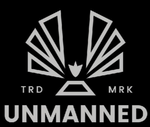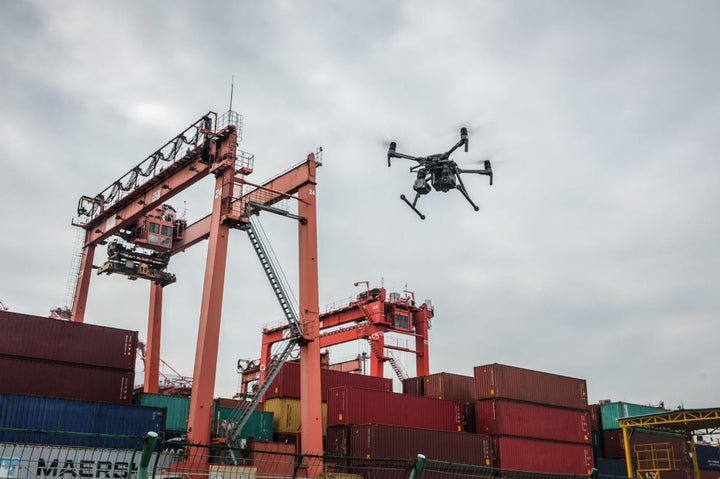Over the years, drone technology and its industry have been growing in both civil and professional areas. Many unmanned aerial vehicles (UAVs) are now being used for many different purposes and their popularity is expected to grow even more in the coming years. It’s also probably one of the reasons why you got interested in drones in the first place.
With drones’ many convenient purposes, it may be hard to determine which type of drone to get as a beginner. That’s why we’ve gathered all the necessary information about the different types of drones, their potential pros and cons, and how they’re generally used. This way, you can better understand what type you should get for yourself.
Overview: What is a Drone
A drone is an unmanned aerial vehicle (UAV) or a flying robot or machine that can fly just by being remotely controlled or using software-controlled flight plans. You don’t need a human pilot to fly it. Moreover, drones have sensors and GPS that make them very useful for different commercial, industrial, and professional uses.
4 Main Types of Drone
Although drones come in different sizes and designs, there are four main types of drones:
1. Single Rotor Drones

Single rotor drones look like actual helicopters in terms of construction and design but are smaller in size. It has one rotor that provides the drone power and a tail to control the direction and stability of the flying vehicle. Compared to the other types of drones, single rotor drones tend to be larger and more complex.
Pros
- They’re built to be strong and durable to carry larger payloads.
- They use gas engines and not batteries, allowing them to fly longer distances and for longer periods of time.
- Since they use one large rotor blade, they’re more energy-efficient than multi-rotor ones.
Cons
- They’re more complex to use and expensive.
- Due to their complexity, they require a lot of maintenance and care.
- They vibrate, which can affect their stability when landing.
- They have long and heavy rotor blades which can be dangerous.
Nowadays, single rotor drones are used for:
- Drone surveying
- Aerial LIDAR laser scans
- Military purposes
- Carrying heavy payloads
2. Multi-Rotor Drones

This is the most popular type of drone nowadays and you’ve probably seen it used even for leisure purposes. Multi-rotor drones are also the cheapest and easiest option to go as a beginner since they’re small and easy to control. With their design of multiple rotors or fans, these drones can easily hover and take off vertically.
Generally, they’re called multi-rotor because they have more than one motor. A multi-rotor drone can actually have different numbers of motors: tricopters (3 rotors), quadcopters (4 rotors), hexacopters (6 rotors), and octocopters (8 rotors), among others. The most common among these are quadcopters or drones with four rotor blades.
Pros
- They have increased maneuverability that allows them to move in different directions and rotate on their own axis.
- Due to their small and compact body, they can fly much more closely to buildings and structures.
- You can attach or install all types of cameras on them to perform different tasks.
Cons
- They have limited endurance and speed, making them unsuitable for large-scale aerial mappings and long-distance tasks.
- They use batteries to fly which give them only around 20 to 30 minutes of flying time with a lightweight payload. The heavier the load, the shorter the flight times.
- The more rotor these drones have, the harder they become to control.
Despite the cons, multi-rotor drones are still widely used for these purposes:
- 3D scans
- Photography and videography
- Visual inspections
- Thermal reports
3. Fixed-Wing Drones

These drones look like conventional planes due to their design and structure. They don’t use copters or rotors to fly and instead use wings like those in airplanes to fly. Because of this, this drone type only moves forward and uses aerodynamics to stay in the air, making it energy-efficient. Compared to the previous types of drones, fixed-wing drones can’t hover and take off vertically.
Pros
- Since they use gas power and are more energy-efficient, fixed-wing drones can fly longer distances with an average flight time of a couple of hours. Many models can stay aloft for at least 16 hours.
- They can carry more weight and fly at higher altitudes compared to the other drone types.
- Because of their static wings, they have a great speed advantage over rotor-based drones.
Cons
- Since they can only move forward, fixed-wing drones are harder to launch, maneuver, and land.
- They can be expensive.
- You need to train on how to use this type of drone since they function differently than rotor-based drones.
- Due to their lack of stability when flying, you can’t use them for aerial photography.
- They require a larger clear space to take off and land, just like airplanes.
The current technical uses of fixed-wing drones include:
- Drone surveying like Coastal Surveys, Forestry or Environmental Surveys, and Pipeline UAV surveys.
- Aerial inspections and mapping
- Security
- Agricultural purposes
- Construction
4. Fixed-Wing Hybrid VTOL Drones

The last drone type is a hybrid one that combines the functionality and benefits of fixed-wing and rotor-based drones. They’re fixed-wing aircrafts that are modified with rotors so they can take off and land vertically. This drone technology in general is relatively new in the market so you may not find many models yet.
Pros
- They’re perfect for forward flight and hovering.
- This drone type offers the best of both rotor-based and fixed-wing drones.
- They usually have an autopilot feature which can keep the drone stable and make it easier to fly through the sky.
Cons
- There are still not many models or products available on the market.
- This drone technology is still being developed.
Despite its amazing advantages, hybrid VTOLs are only currently used for these purposes:
- Delivery
- Rescue operations
- Power line inspection
- Mapping
Conclusion
Drones are now becoming more and more popular and serve many purposes in different industries. Professionals can use it for surveying, mapping, inspections, and even for delivery. Even the military has been using them for many tasks. With such advancements in this technology, it’s important to know the types of drones you can get so you can narrow down what type of drone would be best for your needs.
Do you want one for aerial photography and videography? Or do you want one just for fun? No matter what reason or purpose, there’d be a type perfect for you. You can check out our drone collection for different drones and drone-related products.


